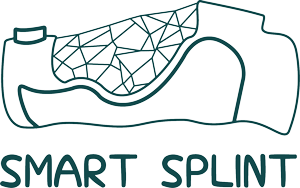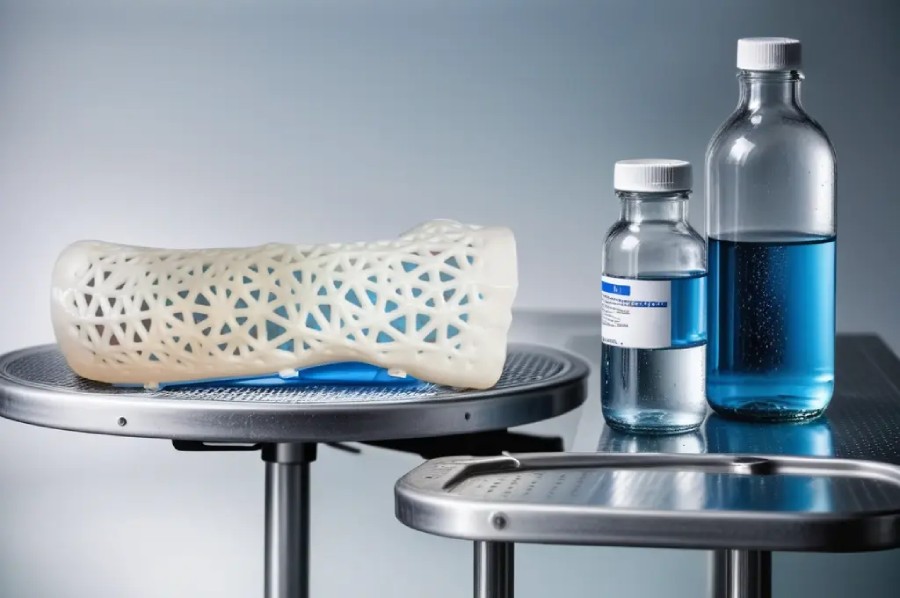
Monitoring Healing with Serial Splinting
Monitoring Progress Through Serial Splinting
While initial splinting provides immobilization to allow healing to begin, practitioners also use serial splinting applications to monitor recovery progress over time. Making adjustments as needed to gradually reduce support fosters continued improvement in a safe, supervised manner. This follow-up approach improves outcomes by finetuning splinting programs individually.
Periodic Re-Evaluation
Periodic Re-evaluation is a key component of monitoring healing through serial splinting. Scheduled follow-up visits allow clinicians to closely track progress and make adjustments accordingly.
Re-assessments typically occur every 2-4 weeks but may be more or less frequent depending on the nature and severity of the injury. For high-risk fractures or post-surgical cases, exams may happen weekly until stable healing is confirmed. Less serious sprains or strains may only warrant monthly checks.
During visits, a thorough physical examination is performed. Clinicians make detailed observations of swelling, pain levels, level of tenderness, and comparisons to prior exams. The range of motion is carefully measured with a goniometer to quantify gains. Muscle strength testing provides objective data on recovery milestones.
Imaging plays an invaluable role. X-rays reveal bone regeneration over time. MRI or ultrasound can depict ligament/tendon remodeling which physical exams alone may miss. This guides decisions like advancing rehabilitation protocols.
Patient-reported feedback is also considered. How activities like dressing or writing give insight beyond objective findings. Compliance with self-care and perceptions of function all factor into the clinical judgment of readiness for the next steps.
With serial evaluation, even subtle signs of progress or lingering deficits that may not be obvious to patients can be identified and addressed proactively through splint modifications that optimize the recovery process.
Remolding Splints
Remolding splints allows practitioners to continuously refine immobilization as healing and function change over time. For many fractures, a graduated reduction in support is ideal to safely regain motion.
Initial rigid casts may be replaced with thermoplastic splints after 4-6 weeks once periosteal new bone forms. This semi-rigid material custom molded at each visit adapts precisely to the contours of recalcified fragments.
As callus strengthens, hinges or articulating windows are gradually introduced into the splint design. Starting in low-mobility planes of motion, this enables a supervised range of motion exercises to prevent proximal joint stiffness.
Weight-bearing may also be phased in, transitioning patients from non-weight-bearing status in a cast to partial or full weight-bearing in a customized splint with targeted padding modifications.
For unstable injuries, serial splint remolding helps maintain anatomic reduction as rehabilitation stresses are applied. Remodeling soft splint supports prevents loss of correction during vulnerable healing phases.
Through this step-down process, remolded splints stride the line between immobilization safety and enabling functional progression tailored dynamically to tissue-level readiness.
Varying Support Levels
Varying support levels are key to safely advancing recovery through serial splinting. As clinical and functional milestones are met, splint designs are appropriately modified to provide just enough restraint without impeding progress.
For anterior cruciate ligament tears awaiting surgery, bracing may transform from a rigid knee immobilizer in the acute phase to a lighter-hinged model at 4-6 weeks when walking tolerance grows.
Medial collateral ligament sprains may progress from a locked straight leg brace early on to allow gentle bending, then graduate to a softer sleeve as extension strength rebounds.
Ankle fractures may change from a rigid below-knee cast to an air cast after immobilization, permitting modest loading tests. Followed by an ankle brace with graduated compressive zones to offload pain sites.
Gradually dialing down immobilizing components parallels tissue strengthening over appointments. Precise adjustments balance safety against range, endurance, and functionality gains to optimize mobility restoration. Serial splinting guides a personalized timeline rather than one-size-fits-all solutions.
Careful monitoring ensures limitations are respected to avoid overstressing vulnerable areas not yet prepared to advance. A systematic step-down process leads to full functionality.
Careful Observation
Any adjustments require close monitoring for appropriate adjustment tolerance without overloading weak tissues or risking regression. Training augmentation into rehabilitative drills occurs under guidance to ensure safety and identify limitations requiring further stabilization. Delayed union signs may necessitate returning to prior immobilization levels briefly for additional healing time.
Preventing Recurrence
While the main goal of splinting is to facilitate healing, properly implemented serial splinting can also help prevent re-injury. Certain injuries require continued protection even after clinical healing to avoid recurrence.
Stress fractures are a prime example. The bone has mended, but rebuilding strength and tolerance takes time. Bracing during the first few weeks of return to activity monitors for overload signs.
ACL reconstructions may progress from hinged braces to functional knee sleeves during sports integration to safeguard the graft from excessive forces.
Other injuries like shoulder instability benefit from recurrent dislocation prevention slings during high-risk positions as motion restores.
Determining timelines for reinjury prophylactic splinting relies on scrutinizing milestones like pain-free full function, isometric strength symmetry, and sport-specific drills completed without limitations.
Gradually phasing out protective splints prevents over-reliance while giving vulnerable tissues sufficient time to recondition. This serial monitoring optimizes long-term healing success.
Proper Documentation
Proper documentation is crucial in any healthcare setting, as it ensures that all pertinent information regarding patient care is accurately recorded and readily available for reference. In the case of progress notes, a comprehensive evaluation of each step in the healing continuum and the effectiveness of treatment approaches can be tracked and justified.
By documenting exam findings, such as range of motion, strength, and sensation, healthcare professionals can monitor the progress of their patients over time. This allows them to identify any improvements or setbacks that may occur and make informed clinical decisions accordingly. For example, if a patient’s range of motion is not improving as expected, the healthcare professional may choose to modify the treatment plan or consider alternative interventions.
Imaging results, whether they are X-rays, MRIs, or CT scans, are also important elements to include in progress note documentation. These images provide objective evidence of the patient’s condition and can help the healthcare professional determine the effectiveness of the treatment approach. For instance, if a follow-up MRI shows that a fracture is not healing as anticipated, the healthcare professional may opt for a more aggressive intervention, such as surgery.
Splint modifications made throughout the healing process should also be documented. This includes adjustments made to the fit, position, or type of splint used. By documenting these modifications, healthcare professionals can ensure that they have accurately captured all factors that may have influenced the patient’s progress. Moreover, it helps them assess if the chosen splinting approach is proving effective or if alterations need to be made.
The patient-reported function is another crucial aspect of progress note documentation. By including information about the patient’s self-reported symptoms, level of pain, and functional limitations, healthcare professionals can gain insight into the patient’s subjective experience. This information helps them tailor treatment plans to address individual concerns and evaluate the impact of interventions on the patient’s daily life.
Lastly, documenting potential difficulties encountered during the healing process is vital. This includes any complications, setbacks, or unforeseen challenges that may have arisen. Proper documentation of these difficulties facilitates communication between healthcare professionals and improves continuity of care. It also allows for a better understanding of the known risks and potential complications associated with specific treatment approaches.
Finally, proper documentation is crucial for tracking the progress of patients and justifying clinical decision-making. Thorough progress note documentation, including exam findings, imaging results, splint modifications, and patient-reported function, provides a comprehensive evaluation of each step in the healing continuum. It enables healthcare professionals to assess the effectiveness of serial splinting approaches tailored to individual concerns and make informed treatment decisions.
Conclusion
In conclusion, serial splinting is a crucial component of the rehabilitation process following many injuries. By carefully evaluating patients at scheduled intervals, clinicians can gain insight into healing progression and make evidence-based modifications to splints as needed. This personalized approach allows immobilization levels and restrictions to be systematically reduced in line with functional gains. Remolding splints ensures the latest design precisely accommodates the injury as it evolves. Varying support through step-down bracing and sleeves advances recovery safely. Periodic re-evaluation justifies decisions and tracks outcomes. If used correctly, serial splinting can not only facilitate healing but also maintain protection and help prevent reinjury as activity levels increase. Overall, this monitoring strategy seamlessly transitions patients from injury through rehabilitation according to their unique maturation timeline, optimizing both short and long-term outcomes.


